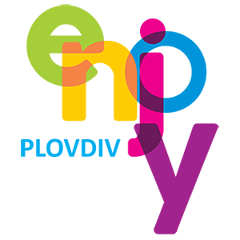The Historical and Cultural Symbols of Bulgaria

- Trvanie: 5 Dní (cca.)
- Poloha: Plovdiv
- Kód produktu: 5DHCBG
About
This tour manages to capture the essence of the history, culture and traditions of Bulgaria along with its chief must-sees, all in 4 breathtaking days. Explore Rila Monastery, Sofia, Koprivshtitsa and Plovdiv and walk among the remnants of ancient civilizations in UNESCO World heritage sites.
Highlights
- Visit the Rila Monastery – a UNESCO World Heritage Site
- Explore the city of Sofia and its top attractions, including the St. Alexander Nevsky Cathedral
- Travel to the historic town of Koprivshtitsa, where every other house is a museum
- Go sightseeing in Plovdiv and see famous landmarks like the Old Town and the Ancient Theatre
Description
Day 1
Arrival in Sofia. Pick-up from the airport and transfer to the hotel in Sofia.
Day 2
Sofia-Rila Monastery-Sofia (222 km)
Rila monastery is the biggest monastery in Bulgaria and one of the country’s most emblematic cultural landmarks. It is the most influential spiritual centre in the country and the second biggest monastery on the Balkan Peninsula. It was founded in the 10th century by the monk-hermit John of Rila, who was later named patron saint of Bulgaria. Rila Monastery is one of Bulgaria’s UNESCO World Heritage Sites.
In the afternoon, we’ll go on a sightseeing tour of Sofia’s top attractions. Its busy streets, the beautiful Baroque architecture in the Center and the park possess a lively charm that leaves you eager to explore, but the monuments and landmarks it is most famous for deserve our full attention.
The Saint Alexander Nevsky Cathedral is one of the largest Orthodox Christian cathedrals in the world and the second largest on the Balkan peninsula. Its impressive size and intricate design mark it as one of the most stunning architectural mavels in Bulgaria and Sofia’s most recognizable landmark.
The Saint Sophia Basilica is a red-brick church is stands atop the foundations of a sacred temple built in Roman times. The huge burial site under its floor allows visitors of the church to explore its catacombs and get lost in a labyrinth of ancient tombs and corridors.
The Church of St. Nicholas the Miracle-Worker is a beautiful golden-domed church designed in the Russian Revival Style. Visually, it is unlike any other Orthodox church in Bulgaria. It is believed to be able to grant wishes.
The Ivan Vazov National Theatre is an example of neoclassical architecture is so spectacular that you will want to carry the memory home with you.
The Church of St. George, built by the Romans is in the 4th century, is an early Christian red brick rotunda that is considered the oldest building in Sofia.
The bustling Vitosha Shopping Street perfectly embodies the dynamic atmosphere of the capital of Bulgaria. Overnight in Sofia.
Day 3
Sofia-Koprivshtitsa-Plovdiv
A visit to Koprivshtitsa and its Old Town – a place strewn with countless cultural and historical landmarks, including houses, churches, museums, water fountains, an ossuary, bridges and monuments. It is home to a large number of historic house-museums that once belonged to important revolutionaries and historical figures. We’ll explore its history-laden streets and visits its main attractions.
From there, we’ll be transferred to Plovdiv - the most ancient currently inhabited city in Europe, with a history that dates back to 6th millennium BC. Plovdiv is a rich tapestry of several different cultures and historical periods, and rightful bearer of the title 2019 European Capital of Culture. Overnight in Plovdiv.
Day 4
Sightseeing in Plovdiv. We’ll start with a visit to the Old Town – a historical and architectural reserve known for its buildings in the style of the Bulgarian Revival Period, ancient Roman and Thracian ruins, various monuments and landmarks, all perfectly illustrating the complicated history that has shaped this city into the Plovdiv of today. We’ll visit its most famous and noteworthy landmarks.
A definite must-see are the Plovdiv Regional Ethnographic Museum and Nebet Tepe – one of the hills upon which the Old Town is built, and the location of what remains of an ancient Thracian fortress. This hill offers a magnificent view of the entire city.
Down the street from there are the Balabanov and Hindliyan Houses, built in the 1835-1840 and known for their impressive architecture, furniture, wall paintings and intricate wood-carved ceilings.
The crown jewel of this city is the Roman Theatre, also known as the Ancient Theatre of Philipoppol – one of the best preserved in the world. Constructed in the 1st century AD, it was used for theatre performances, gladiator games and hunting spectacles. It is still in use today as a stage for cultural events.
After the Old Town, we’ll go down to the Main Shopping Street.
The ancient Roman Stadium is mostly buried beneath the city, except for its Northern part, which is uncovered and open to visitors. Games similar to the Pythian Games in Greece were held in the stadium. Visitors can watch video projections telling the story of the Stadium and see a small-scale model of it in full, including the uncovered part.
Next is Kapana (i.e. “the Trap”) – Plovdiv’s famed art corner. Situated just to the right of this part of the Centrum and made up of a labyrinth of intertwining streets lined with modern art stores, stylish little cafes, building walls colorfully painted by talented street artists and constantly changing pieces of modern art scattered around every corner.
Day 5
Departure: Plovdiv-Sofia Airport
The price includes
- Professional English-speaking tour guide
- Accommodation in 3-star hotels in double rooms on half board
- Transfers
The price does not include
- Entrance fees
Notes
This tour is suitable for groups of 6-20 tourists.
Accommodation in a single room: +15 €




